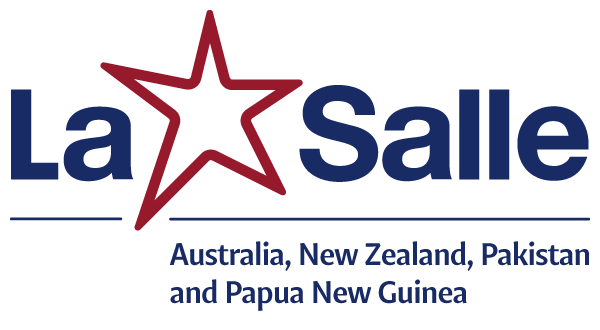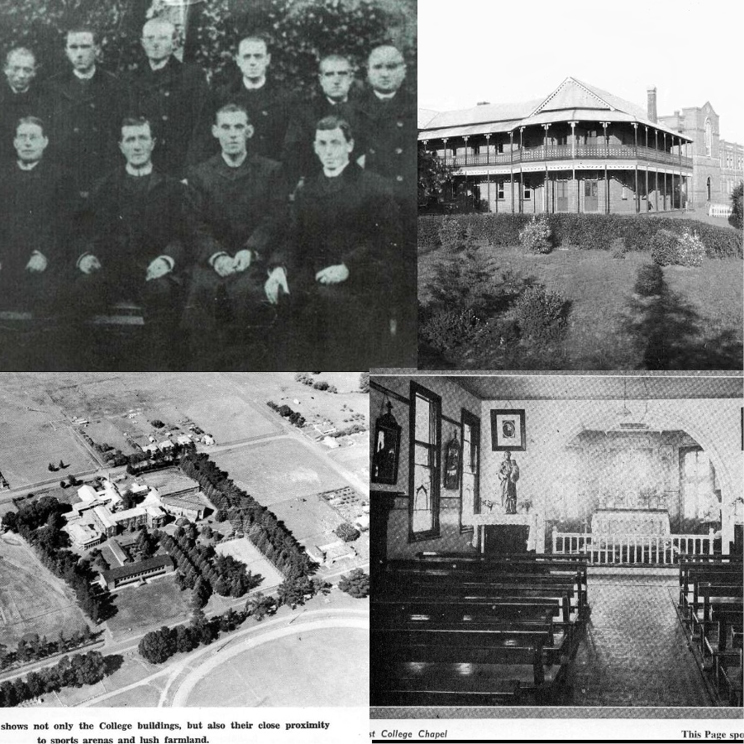Global and Culturally Divergent : Origins of De La Salle in Australia
February 3 will see the anniversary of the foundation Lasallian school in the Antipodes-De La Salle College Armidale in 1906.
The fascinating story of its beginnings is a fine example of the possibilities and problematics of the current “Leavening Project”.
Like many start-ups of a local project for an international organization, it was a struggle and an adventure. As a colonial enterprise – political or religious – it suffered from cultural clashes. Equally, it was be-devilled by the tyranny of distance from continental Europe, as well as the imperial mindset of the French “Regime” – the Brothers’ governing body in France.
CONTEXT: FRANCE, IRELAND & INFANT AUSTRALIA
The French Brothers had pride in their educational achievements of 220 years, with 801 French communities in 1904. In that year, the liberal, anti-clerical push in France reached an apogee in education with the prohibition of any religious schools in a new free, compulsory and secular system. Already, the Institute had expanded to 20 other countries in the 19th century, including 210 Brothers teaching 4760 students in Ireland and England. This internationality was to be fortuitous for the foundation in the Antipodes.
In 18th -19th century colonial Australia, the Catholic Church had been largely Irish in culture, within an English-led rule. It was also viewed as ambivalent in loyalty, and somewhat generally independent. Many Irish bishops scoured religious orders back home for teachers to offer a Catholic education to their adherents.
The global nature of the Church assisted bishops to write regularly to the De La Salle superiors in France for Brothers over more than two decades, so that finally Cardinal Moran in Sydney received a positive reply in the fateful year of 1904 for personnel. In November 1904, after suggesting new needed schools at Burwood and Surry Hills, Moran offered the first venture to Bishop O’Connor, the Bishop of Armidale, which had been founded as a separate Diocese in 1869. Moran did so ‘considering only the interest of the Church.’
TWELVE HAPPY APOSTLES? – and AN “IDEAL CLIMATE”!
Br. Anthony Jerome Flood, the Visitor of England-Ireland, came on a scoping mission from Marseilles on 31 May 1905, with Br Divitien-Henri, former Director of St Malo and Br Didyme, former Visitor. Anthony was impressed with newly-minted Australia-
“Food is very cheap. Good fresh meat at 3d-5d. a lb., fruit in all seasons…The Catholics are good, the people generally very nice. The boys are gentle; in fact like Irish boys without the bashful spirit” (Carmody, 24).
Arriving in Sydney, they travelled to Armidale on 3 August 1905. Here they remained with Bishop O’Connor for three months reporting that the site 20 minutes from the church; the climate was “ideal” and the school was “admirably situated in a 10-acre field”. A nearby former Protestant college could be “a very convenient mother house for the district”.
The abundance of French Brothers now locked out of Institute schools led to a cohort of 7 French and 5 Irish Brothers assigned, and travelled on the steamer Runic from Liverpool in mid-November 1905. Brothers Defendant-Marie, Camelian, Camille-Eugene, Defendant, Cajetan of Jesus, Claude-Marie and Daniel Paul were joined by Alban Salmon, Macnesius Smythe, Patrick McNamara, Athanasius Grace and Benignus White. They arrived in Sydney on 6 January 1906. “The voyage was evidently very pleasant for all concerned and the relations between the Irish and the French Brothers were friendly, though the latter knew very little English” (Donovan 13). This happy bonding was not to last!
In a pastoral letter of February 8, the Bishop of Armidale was magnanimous in his praise of the new Brothers- ‘These worthy Brothers…second to none in the world. The records of their success in the continents of the old world is very high. By training, acquirements and character they are competent to do fullest justice to the youth committed to their care….So well and widely are their merits known that they already have thousands of schools in Europe, Asia and America”. He appealed to the laity for support, noting several times the “great deal of expense”, the ultra-modern facilities attention to “hygiene…comfort…cleanliness…new furniture of superb quality” including a science aboratory “perhaps the finest in any district of the state” (Carmody, 28-29)
De La Salle College opened on 3 February with 17 students – 9 boarders and 8 day boys.
NO ENTENTE CORDIALE
However, difficulties soon emerged: there were too many! teachers to be paid stipends for by the poor diocese. The Irish Brothers had expected Br. Alban to be the Director (hence Principal), while the French presumed Br. Didyme to be the leader and Br. Marius Byrne, the assigned Principal, coming from Malaya, did not want to be there:
Monsignor Tobin, the Administrator, largely opposed the French incursion into the tightly-knit Irish Catholic community. The Bishop himself concurred:
“I fear … (the French Brothers) presence here …is to be regretted…that they were ever sent for they are quite incapable of teaching. All our pupils are sons of Irish parents who do not want their children to be taught by foreigners”
While understanding their plight, he feared for the “peace and harmony” of the new venture. Br. Marius and the French Brothers presented their views and asked to leave Australia writing to the Superior General on 4 March explained it was not a practical matter of lack of English as a language, but a racial question “of nationality, of influence, of direction…If the clergy had accepted thee French Brothers, the Irish would not have remained. At present we (the French) are living apart and are together only at the chapel. They (the Irish) demanded that…”
Br. Divitien wrote in a similar vein: “We have been deceived all along the line, we and the superiors” – meaning that the Australians wanted an Irish province and the Irish Province had been underhand in its designs. The result was that Br. Marius, never happy in his appointment, just de-camped and returned to Malaya. The seven Frenchmen left Sydney for Colombo on 23 April.
Both cultural groups saw themselves – rightly? – as being deceived by their superiors, who blithely engineered a crisis and could not resolve it, being 1200 miles away. The cross-purposes of planning and cultural differences were clear to see! The Church showed once more its clear difficulties in ‘enculturating’ a new mission in a foreign’ culture.
Plus c¸a change!...
HARMONY, SUCCESS, MORE CHALLENGES
The community of now five Irish Brothers under Br. Alban ended a successful year in several ways. The roll call was now 36 boys, of whom 25 were boarders. Brs. Athanasius and Patrick taught at the parochial primary school in town, so the work at the secondary College was arduous. This expanded ministry and solid College education led to a reputation in the area:
“Happily, we have succeeded in directing these schools in a manner that satisfies the clergy, the parents and the civil authorities, who take a great interest in our establishment”. Students were “most likeable and …willingly amenable to or direction”. The “break-up” end-of-year concert had present the local Member of Parliament, the Mayor of Armidale and other notables, who supplied gold medals of achievement to students.
The year 1907 saw involvement and success in cricket and football. Bishop O’Connor was pleased to the extent of calling for more Irish Brothers as school expansion was projected. By year’s end two more Brothers were appointed – Brs. Benedict and Paul Phelan, the latter from South Africa, who was to become the renowned first resident Provincial of the Australian Province.
However, the challenges remained. As Donovan says:
“The legacy of the problems associated with the Australian foundation persisted for several years….the isolation of the Australian foundation, the lack of ready communications with Europe, and the perceptions of Superiors that were formed largely by the French brothers…(convinced the Australian Brothers) that they were blamed for the early fiasco and felt abandoned by their French superiors who virtually ignored them for almost two years”. Br. Alban talked of “discouragement” and “desertion” to Br. Anthony. The Brothers found themselves also without their vows being accepted by superiors in Rome (another story), and the seeming interference of the Bishop in their classes’ supervision and presence at parish liturgies. The looming ‘Latin Question’ was another huge hurdle.
GROWTH, DECLINE, NEW BIRTH
Over the decades, there were years of hard work, care for cohorts of up to 200 boarders, and a reputation built on the leadership of Brothers like Benignus White, Frederick Sheridan and Patrick Howard. This became spectacularly undone with the closure, in 1974, of De La Salle College, in dire financial straits. From the collapse came the new co-educational O’Connor Catholic High, in partnership with the Ursuline Sisters. It was named after the original patron of De La Salle – the founding Bishop.
Today, says the immediately former Principal, Regina Menz:
“O’Connor has a strong reputation in our community. Our pastoral care and education of the whole child is valued and respected across the Armidale region. Students travel from across the area including from Walcha, Guyra and Uralla to attend our school. We continue to challenge ourselves to meet the needs of our students and their families in a faith filled environment” – and as a Lasallian Associated College.
References:
-
Peter Donovan: For Youth and the Poor: the De La Salle Brothers 1906-2000 (2001)
-
Aloysius Carmody: The De La Salle Brothers in Australia (1956)
(Author: Br Gary Wilson, District Creative Writer)
- Log in to post comments

